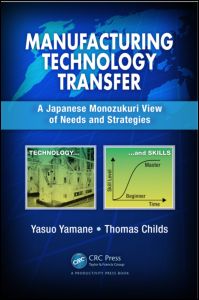

Most ebook files are in PDF format, so you can easily read them using various software such as Foxit Reader or directly on the Google Chrome browser.
Some ebook files are released by publishers in other formats such as .awz, .mobi, .epub, .fb2, etc. You may need to install specific software to read these formats on mobile/PC, such as Calibre.
Please read the tutorial at this link: https://ebookbell.com/faq
We offer FREE conversion to the popular formats you request; however, this may take some time. Therefore, right after payment, please email us, and we will try to provide the service as quickly as possible.
For some exceptional file formats or broken links (if any), please refrain from opening any disputes. Instead, email us first, and we will try to assist within a maximum of 6 hours.
EbookBell Team

0.0
0 reviewsBased on a bestselling book originally published in Japanese, Manufacturing Technology Transfer: A Japanese Monozukuri View of Needs and Strategies offers time-tested methods and little-known tips for achieving successful transfer of technology along with the skills required to operate that technology. Designed to support a series of lectures on technology transfer within a master’s course on the management of technology, it presents the resultsof years of research carried out at Hiroshima University.
The book delves into the authors’ decades of experience transferring technology between Japan and the rest of the world, particularly to developing countries from where much of the world’s future economic growth is expected. It contains case studies of successful technology transfers from both the ship building and food equipment industries. Its wide-reaching coverage examines methods of skill transfer, production management, and manufacturing company classification.
Introducing readers to the engineering activities that occur within the manufacturing industry, the book illustrates the engineering technology activities involved in manufacturing, along with the production management activities required to support them. It also explains how job simulators can help shorten learning times in the manufacturing industry in the same way that flight simulators are used to teach flying skills to pilots.
The book outlines a framework for teaching and learning processes that can be visualized in terms of an S-shaped learning curve. It explains how technology transfer overseas should be supported by contractual agreements between the parties concerned. Detailing the legal/contractual responsibilities for all parties involved, it also describes what you should do if problems arise during the transfer.
Integrating previously unpublished research results with illustrative case studies, this book is suitable for a wide audience within the manufacturing industry—including manufacturing engineering students in both developed and developing countries, those responsible for the development of manufacturing engineers in industry and elsewhere, and anyone interested in the international activities of Japanese manufacturing companies.